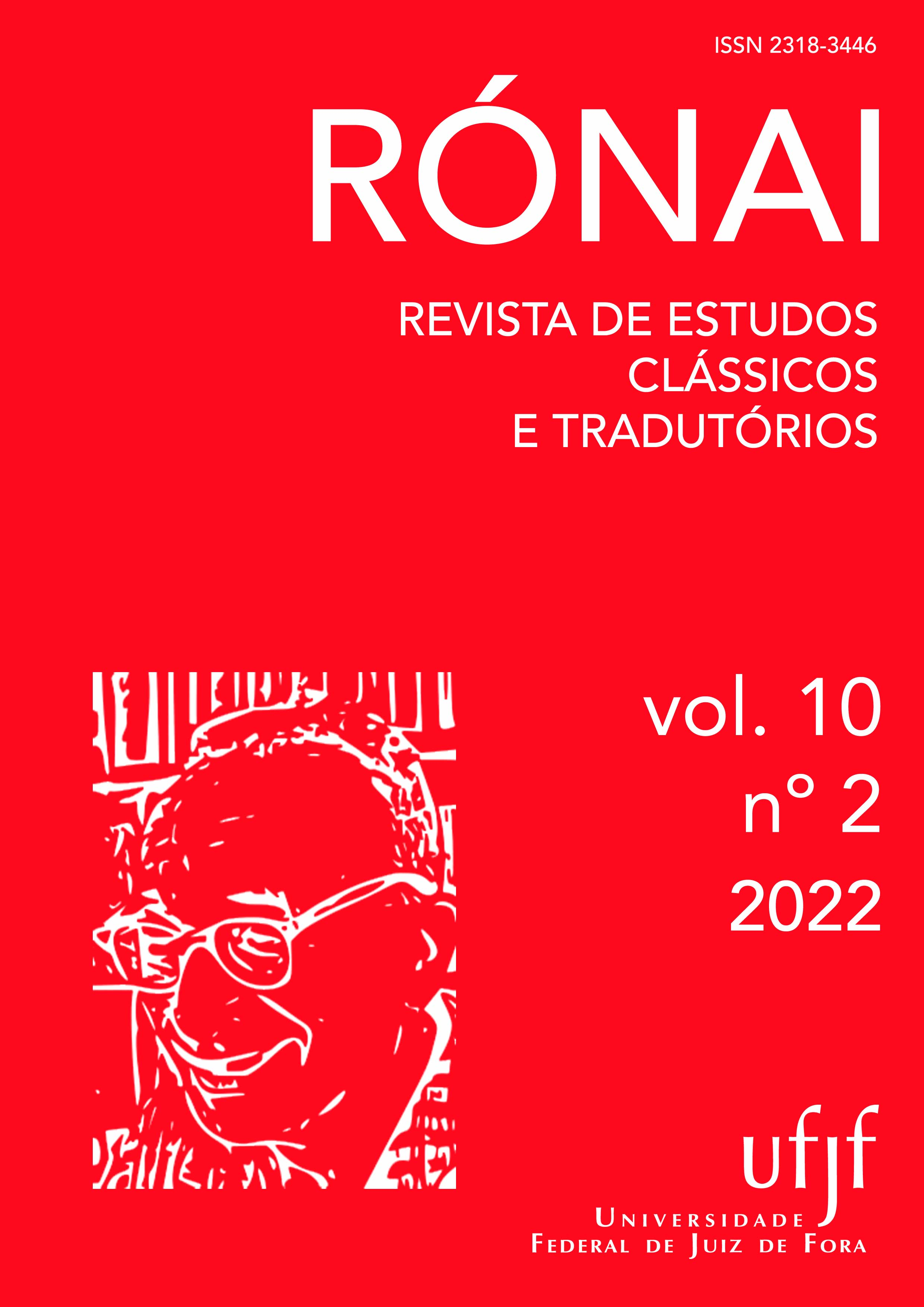Everyday life and mockery in Latin grafitti: introduction and translation
DOI:
https://doi.org/10.34019/2318-3446.2022.v10.39006Palabras clave:
inscrições, epigrafia, tradução, cultura romana, graffitiResumen
In this work, we will translate into Portuguese a selection of Roman grafitti with an everyday and mockery epigraphic thematic, based on the catalog by Luca Canali and Guglielmo Cavallo (1998) in Graffiti latini: scrivere sui muri a Roma antica. As to an epigraphic typology that serves as portraits of the everyday life and of the mocking and picaresque nuances of the Romans in antiquity, grafitti carry a message directed to a collectivity contemporary or future at the time of its incision or engraving, in a more particular and intimate context. We will present a translation proposal with some commentaries that may clarify aspects from the wall inscriptions.
Descargas
Citas
CANALI, Luca; CAVALLO, Guglielmo. Graffiti latini: scrivere sui muri a Roma antica. Milão: Rizzoli, 1998.
FARIA, Ernesto. Dicionário Escolar Latino - Português. Rio de Janeiro: FENAME, 1992.
GARRAFFONI, Renata Senna. Arte Parietal de Pompéia: Imagem e cotidiano no mundo romano. Domínios da Imagem, v. 1, n. 1, p. 149-161, 2007.
GOMES, Raquel de Morais Soutelo; BORGES, Airan dos Santos. Escrito para a Eternidade: A Epigrafia e os Estudos da Antiguidade. Curitiba: Editora Appris, 2018.
OVÍDIO. Amores e arte de amar. Tradução de Carlos Ascenso André, prefácio e apêndice de Peter Green. São Paulo: Penguin/Cia. das Letras, 2011.
PETRÔNIO. Satíricon. Tradução, introdução e posfácio de Cláudio Aquati. São Paulo: Editora 34, 2021.
SUSINI, Giancarlo. Epigrafia romana. Roma: Jouvence, 1982.
THE ANCIENT Graffiti Project. Disponível em: http://ancientgraffiti.org/Graffiti. Acessado em: 03 set. de 2022.
WALLACE, Rex. An introduction to wall inscriptions from Pompeii and Herculaneum. Introduction, inscriptions with notes, historical commentary, vocabulary. Wauconda: Bolchazy-Carducci Publishers, 2005.
VARONE, Antonio. Erotica pompeiana: love inscriptions on the walls of Pompeii. Roma: L'Erma di Bretschneider, 2002.
Descargas
Publicado
Cómo citar
Número
Sección
Licencia
Derechos de autor 2022 Danilo Oliveira Nascimento Julião, Gelbart Souza Silva

Esta obra está bajo una licencia internacional Creative Commons Atribución 4.0.
Derechos de autor
Los autores que publican en esta revista aceptan los siguientes términos:
1. Los autores y las autoras conservan los derechos de autor y le otorgan a la revista el derecho a la primera publicación, que está bajo la licencia Creative Commons Attribution License 4.0 Internacional.
2. Los autores y las autoras pueden publicar y compartir el trabajo con reconocimiento de la publicación inicial en esta revista.
3. Los autores y las autoras de las obras aprobadas autorizan a la revista a asignar el contenido de sus obras, después de la publicación, para su reproducción en indexadores de contenido, bibliotecas virtuales y similares.
Para obtener más información sobre Creative Commons Attribution License 4.0 Internacional, acceda a: https://creativecommons.org/licenses/by/4.0/deed.es
Exención editorial
El contenido de los artículos publicados es responsabilidad única y exclusiva de sus autores, y no representa la posición oficial de Rónai - Revista de Estudos Clássicos e Tradutórios o de la Faculdade de Letras de la Universidad Federal de Juiz de Fora o instituciones asociadas.



